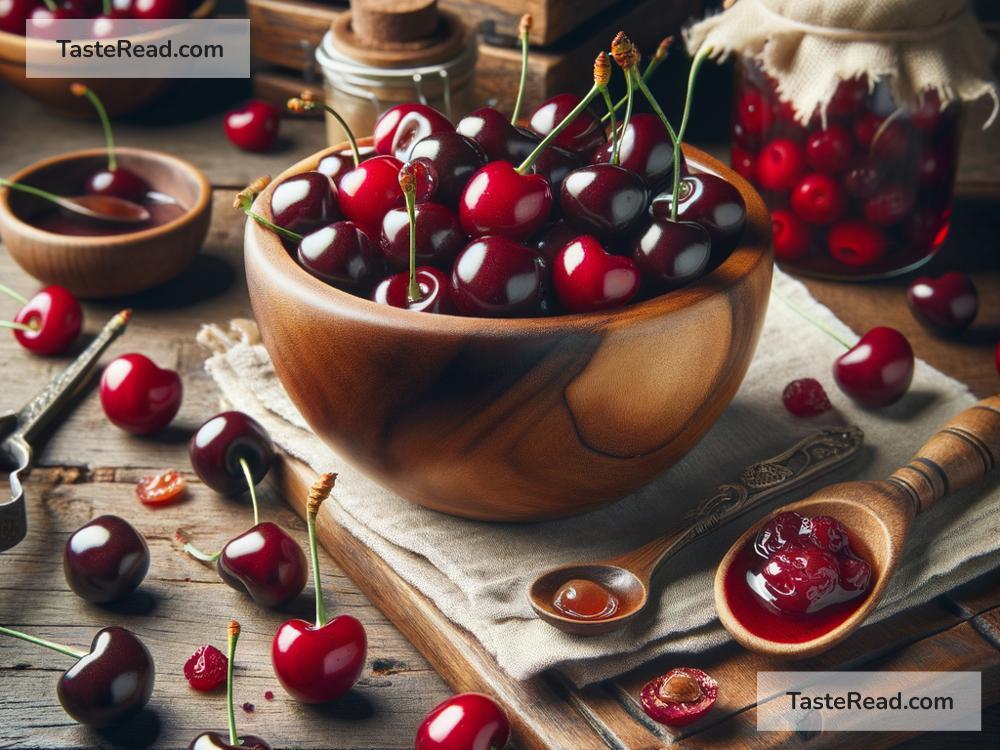The Truth About Cherry Pits and Their Uses
Cherry pits, the hard little seed hidden inside the sweet, juicy fruit we love, aren’t often given much thought. Most people happily spit them out or toss them in the trash when chowing down on fresh cherries. But did you know that cherry pits have some surprising facts and creative uses?
In this article, we’ll explore the truth about cherry pits—what they’re made of, whether they’re dangerous, and how they can be used in everyday life.
What Are Cherry Pits?
Cherry pits (sometimes called stones or seeds) are small, hard kernels that sit at the center of cherries. Like many other fruit pits such as peach or plum pits, they are part of the “stone fruit” family. While we don’t eat them directly, they play an important role in the growth of cherry trees. If you plant a pit in the right conditions, it may eventually grow into a new cherry tree. Amazing, right?
But cherry pits aren’t just about starting new trees—they have some hidden components that might surprise you.
Are Cherry Pits Dangerous?
You may have heard that cherry pits are dangerous, and in part, that’s true. Cherry pits contain a compound called amygdalin, which can turn into cyanide when it’s broken down in the body. Cyanide is toxic and can be harmful if consumed in large amounts. This is why health experts warn against eating cherry pits whole or crushing them.
But don’t panic! Accidentally swallowing a cherry pit usually isn’t a cause for concern. The hard shell of the pit typically passes through your digestive system intact, without releasing the cyanide. Only if the pit is chewed or ground up does the toxic substance become a problem. This is why it’s vital to avoid grinding or eating cherry pits deliberately.
It’s best to enjoy cherries without worrying too much about the pits—just spit them out and move on. Now that we’ve clarified the safety aspect, let’s dive into the many creative ways people use cherry pits.
Practical Uses for Cherry Pits
Even though they aren’t edible, cherry pits can still be put to good use. From DIY projects to eco-friendly solutions, they’re more versatile than you might think!
1. Heat Packs
One of the most popular uses for cherry pits is in homemade heat packs. The pits have a unique ability to retain heat for a long time when warmed. Here’s how you can make one:
- Gather clean, dry cherry pits.
- Sew a small fabric bag or sock.
- Fill the bag with the cherry pits.
- Seal it tightly, then microwave the bag for a minute or two.
Now you have a warm, soothing heat pack perfect for relieving sore muscles, cramps, or cold nights. The pits are smooth and natural, making them an eco-friendly alternative to gel packs. Plus, unlike rice or beans, cherry pits don’t absorb moisture over time.
2. Garden Mulch
If you’re a gardener, cherry pits can be used as mulch or drainage material. Their hard shells take time to break down, so they create pockets for water to seep through without flooding plant roots. Spread the pits in the bottom of plant pots or your garden bed for better aeration.
3. Crafts and Decorations
Cherry pits can be an inexpensive addition to creative craft projects. They can be turned into beads for bracelets, necklaces, and decorations. If you’re feeling crafty, clean the pits, drill tiny holes, and string them together into beautiful natural jewelry.
4. Fuel Source
Believe it or not, cherry pits can be used to make biofuel. Some researchers and industries have explored ways to turn pits into a sustainable energy source. While not something you can easily do at home, it’s incredible to see how something as small as a seed can help power machinery.
5. Composting
If you’re not into crafts or gardening, cherry pits are compostable. Toss your pits into your compost bin, where they’ll eventually break down and enrich the soil with nutrients. Composting is a great way to recycle organic waste and reduce your environmental footprint.
What About Cherry Pit Oil?
This might surprise you, but cherry pits can actually be pressed to extract oil. The oil inside the pit is used in cosmetics and skincare products because it’s rich in antioxidants and vitamins. Cherry pit oil is lightweight and absorbs easily into the skin, making it a popular choice in lotions, lip balms, and soaps. However, extracting oil from cherry pits requires a lot of pits and specialized equipment, so it’s not something most people can do at home.
Wrapping It Up
Cherry pits may seem like a small, unimportant part of cherries, but they’re packed with possibilities! From heat packs to garden mulch, crafts, and even skincare, these tiny pits can be reused in creative and practical ways. While it’s true that they contain a potentially toxic compound, cherry pits are generally safe as long as they’re not crushed or eaten.
So, the next time you enjoy a bowl of cherries, take a moment to appreciate the little pits inside. They might just inspire your next DIY project, eco-conscious gardening idea, or even a thoughtful gift.
Who knew something so small could be so resourceful?


